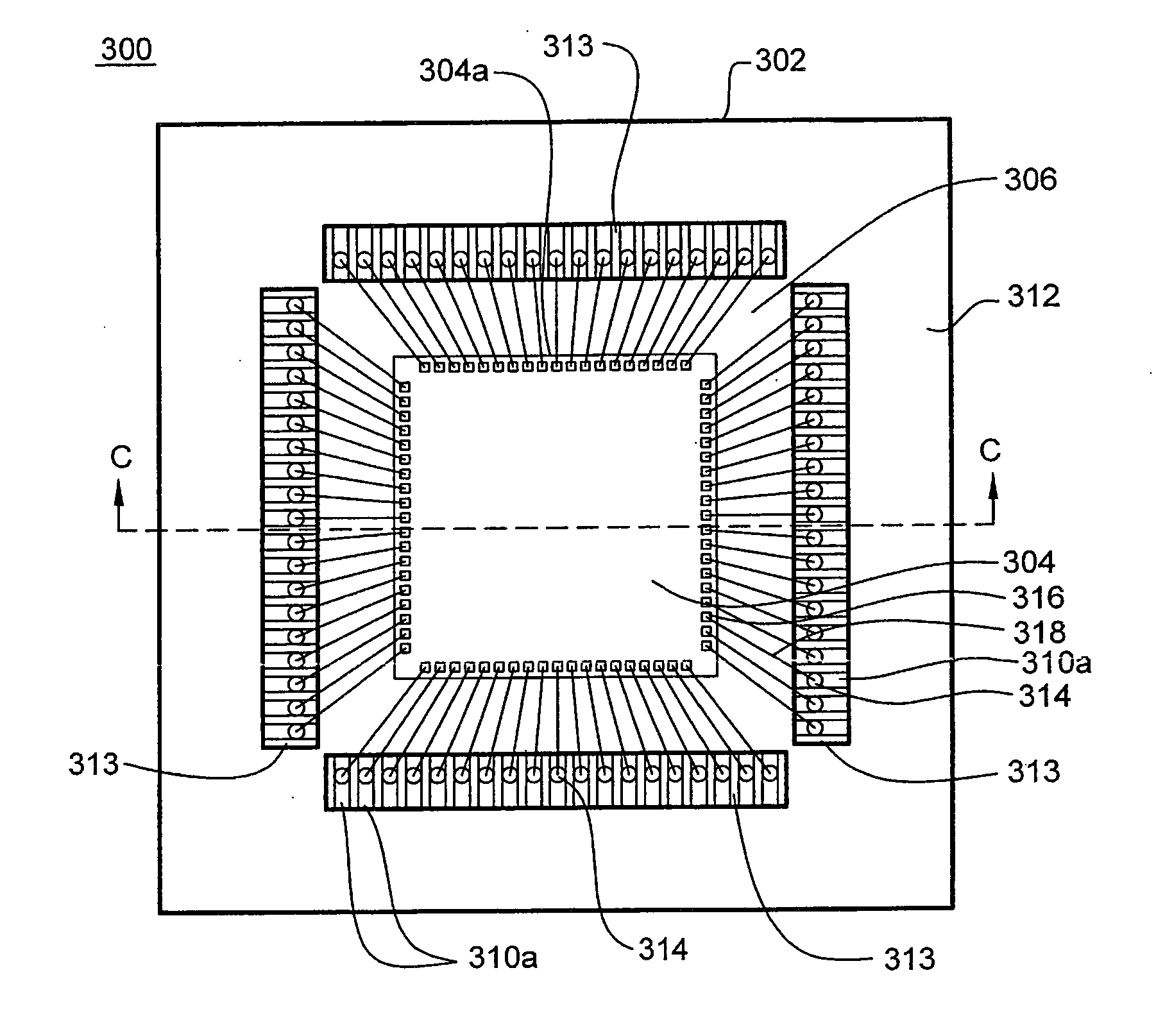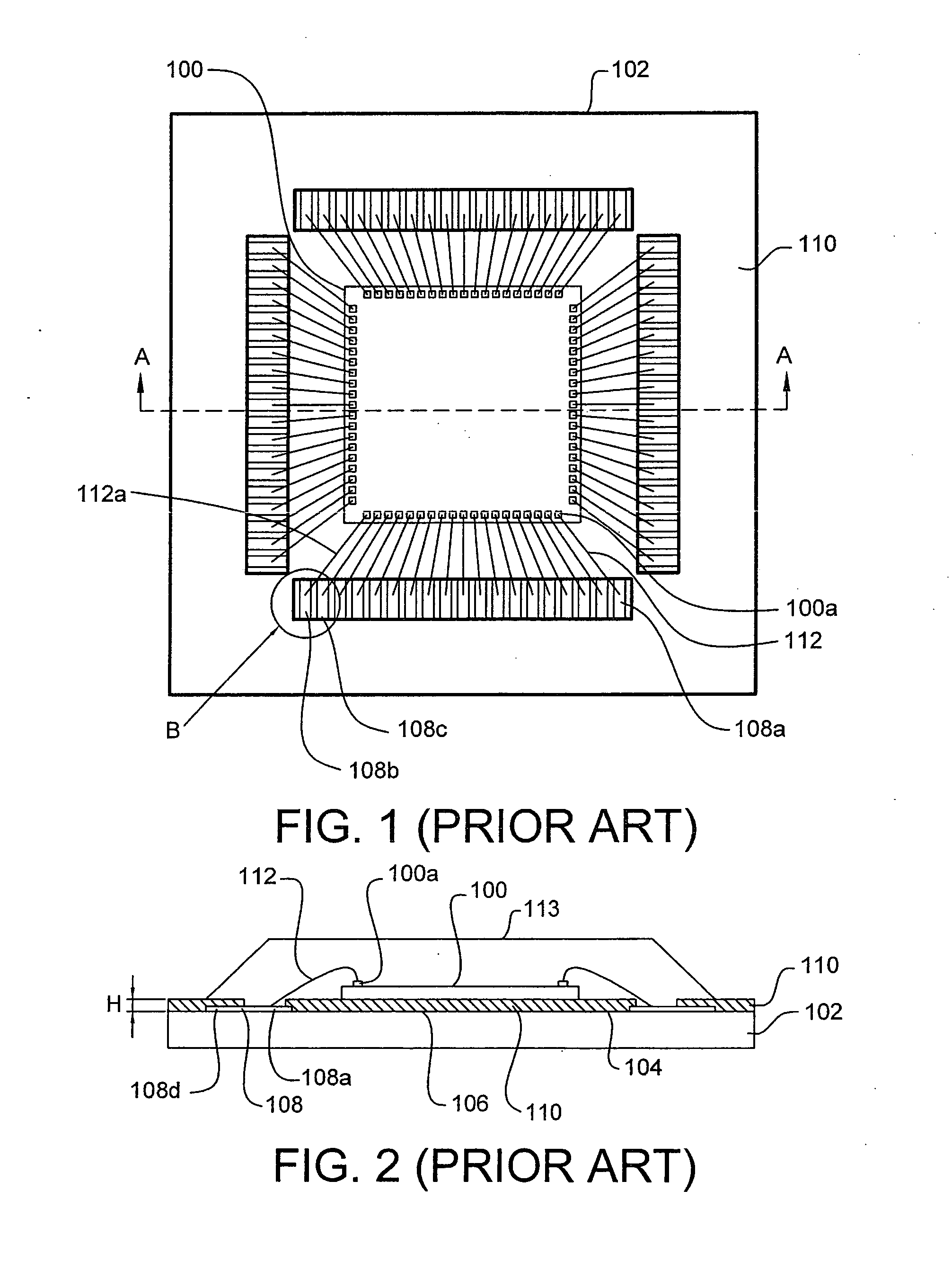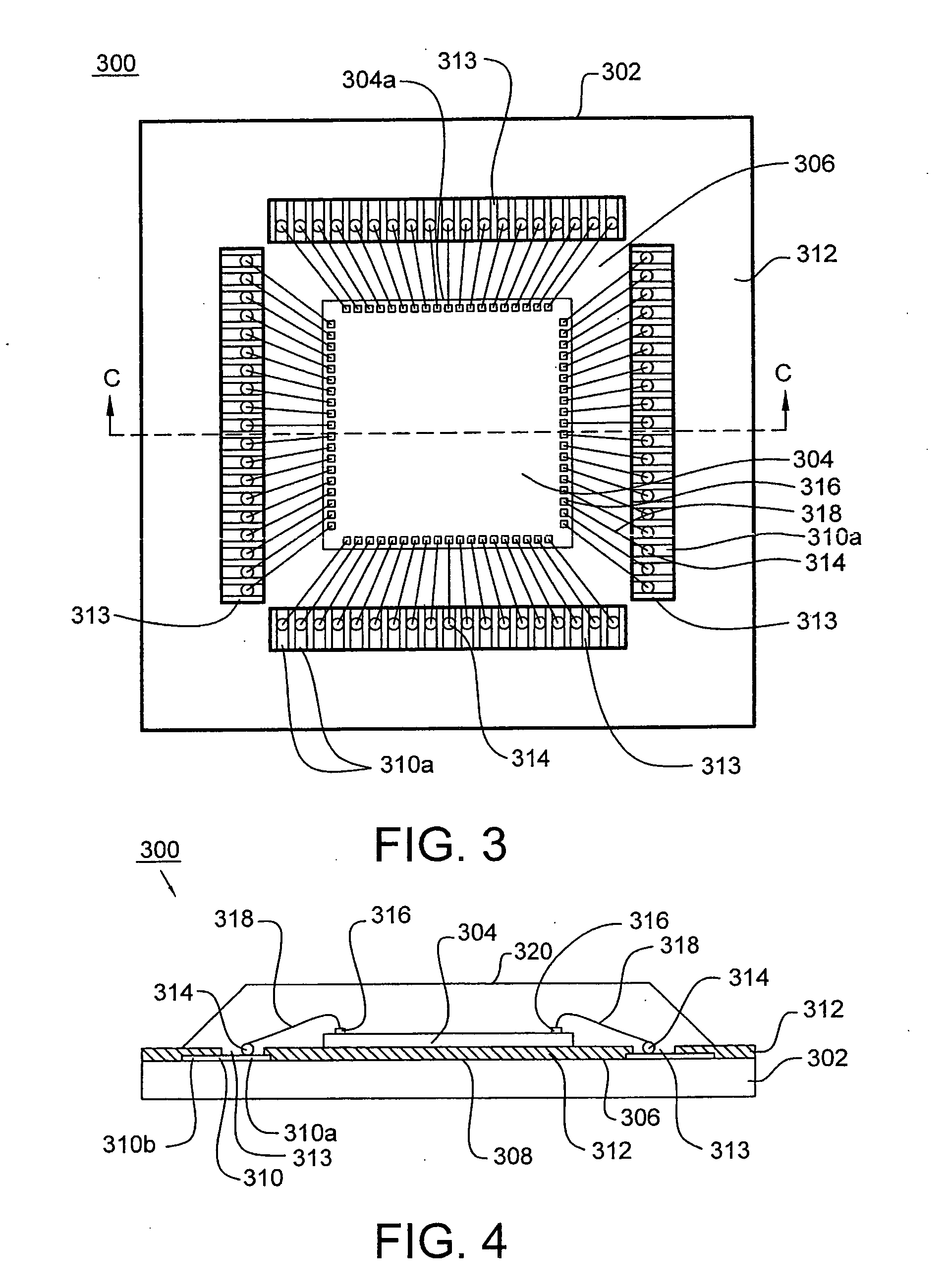Wire-bonding method for connecting wire-bond pads and chip and the structure formed thereby
a wire-bonding pad and chip technology, applied in the direction of electrical equipment, semiconductor devices, semiconductor/solid-state device details, etc., can solve the problems of reducing product yield and damage to the wire bonder
- Summary
- Abstract
- Description
- Claims
- Application Information
AI Technical Summary
Benefits of technology
Problems solved by technology
Method used
Image
Examples
Embodiment Construction
[0024]FIG. 3 shows a top plan view of a semiconductor package 300 formed by using the wire-bonding method of the present invention. FIG. 4 shows a cross-sectional view taken along line C-C of FIG. 3.
[0025] Referring to FIGS. 3 and 4, the semiconductor package 300 includes a substrate 302 and a semiconductor chip 304 disposed on the substrate 302. The substrate 302 has an upper surface 306 and a chip area 308 defined on the upper surface 306 for supporting the semiconductor chip 304. The substrate 302 further includes a plurality of conductive traces 310 formed on the upper surface 306, wherein each of the conductive traces 310 has a section 310a, also referred to as a wire-bond pad, and a terminal part 310b. The sections 310a are arranged side by side around the chip area 308, and the terminal parts 310b are used for being electrically connected to other circuit contacts. A solder mask 312 covers the conductive traces 310 with the sections 310a exposed therefrom. In this embodiment...
PUM
 Login to View More
Login to View More Abstract
Description
Claims
Application Information
 Login to View More
Login to View More - R&D
- Intellectual Property
- Life Sciences
- Materials
- Tech Scout
- Unparalleled Data Quality
- Higher Quality Content
- 60% Fewer Hallucinations
Browse by: Latest US Patents, China's latest patents, Technical Efficacy Thesaurus, Application Domain, Technology Topic, Popular Technical Reports.
© 2025 PatSnap. All rights reserved.Legal|Privacy policy|Modern Slavery Act Transparency Statement|Sitemap|About US| Contact US: help@patsnap.com



